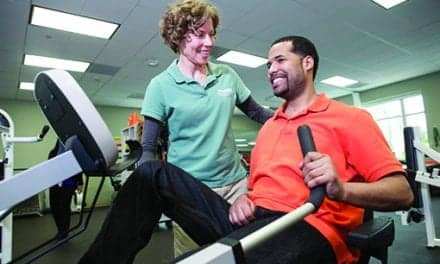Some children recover quickly from traumatic brain injury (TBI), but other children experience side effects for years. Recent research may explain why that occurs.
Published in the July 15 issue of Journal of Neuroscience, the study suggests that damage to the protective coating around the brain’s nerve fibers—not the severity of the injury itself—may be the culprit, according to a news release from University of California-Los Angeles Health Sciences.
This finding, per the release, could be used to help physicians predict high-risk patients who would require close monitoring.
“Just as electricians insulate electrical wires to shield their connections, the brain’s nerve fibers are encased in a fatty tissue called myelin that protects signals as they travel across the brain,” explains study co-author Christopher Giza, MD, director of the UCLA Steve Tisch BrainSPORT Program and a professor of pediatrics and neurosurgery at UCLA’s David Geffen School of Medicine and Mattel Children’s Hospital, in the release.
“We suspected that trauma was damaging the myelin and slowing the brain’s ability to transmit information, interfering with patients’ capacity to learn,” he continues.
Giza and the rest of the study team assigned a series of mental tasks to the test subjects, who ranged in age from 8 to 19 and had experienced a moderate to severe brain injury in the past 5 months. These tests evaluated the children’s processing speed, short-term memory, verbal learning, and cognitive flexibility, the release explains.
They then recorded the electrical activity in the subjects’ brains to test how quickly their nerve fibers could transmit information, and then imaged the wiring to assess its structural soundness.
When the research team compared the patients’ results to those of a matched control group of 31 healthy children, they discovered dramatic differences, the release notes.
Half of the brain-injury group showed widespread damage to the myelin insulating their brain’s circuitry. These patients performed 14% more poorly on the cognitive tests, and their wiring worked three times slower than that of the healthy children.
Scans of the other 16 patients in the brain-injury group showed that their myelin was nearly intact; and their brains were able to process information as quickly as healthy children’s. They performed 9% better on the cognitive tasks than the youngsters with more myelin damage, though not as well as the uninjured kids, the release explains.
“Our research suggests that imaging the brain’s wiring to evaluate both its structure and function could help predict a patient’s prognosis after a traumatic brain injury,” says first author Emily Dennis, a postdoctoral researcher at USC’s Keck School of Medicine, in the release.
“Our next step will be to explore how brain biomarkers change during a patient’s first year of recovery when most people recapture some cognitive function,” states the study’s principal investigator, Robert Asarnow, PhD, a professor of psychiatry and psychology at UCLA’s Semel Institute for Neuroscience and Human Behavior and College of Letters and Science, in the release.
[Source(s): University of California – Los Angeles Health Sciences, Science Daily]





